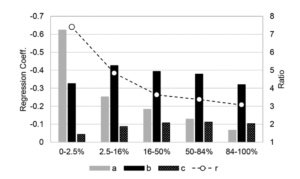Introduction:
Some time or another, you’ve probably talked to a friend about a restaurant you really like, or about a game that you recently played, or even about your experiences with certain courses and professors. These casual chats that you have are the result of an increasingly popular marketing strategy marketers use to attract more attention to their product or service; word-of-mouth marketing. Word-of-mouth (WOM) is referred to as person-to-person communication, usually verbal, regarding a product or service. It relies on the public and their relationships with others to bring in an audience for their product/service. That being said, which has more of an impact on the growth of a product/service; strong or weak ties?
Analysis:
In 2018, a study was done that explored the impact that strong and weak ties have on word-of-mouth marketing. In class, when introduced to strong and weak ties we discussed certain advantages that weak ties have compared to strong ties, such as more diverse job opportunities. It was commonly believed that weak ties are better for word-of-mouth marketing but the authors of the study provide a new perspective and argue that strong ties are more effective than weak ties for driving the growth of a newly launched product.
The authors argue that strong tie relationships tend to be categorized with more frequent interactions, higher levels of trust and greater influence. This gives more weight to spreading positive word of mouth about a product/service through strong ties, which can ultimately help the product/service sell better. Similarly, the opposite can be true as the spread of negative WOM can also hurt the product/service. We see this occur in our own lives, take RateMyProfessors.com for example. It relies on student-generated reviews to provide ratings that many students use to manage their expectations about a course. While these reviews may influence our views of the professor, feedback from close friends who have already taken the course or have previous experience with that same professor will influence our views more than that of a stranger.

Figure above shows the regression analyses of strong ties (b), weak ties (c), and general advertising (a) in different stages in the products growth
The report later expands their reasoning and mentions triadic closure. From class, according to triadic closure if two people have a shared group of friends then they are more likely to be friends. Applying that to word-of-mouth marketing, if two people have a shared group of friends with a positive attitude towards a product/service, then they are more likely to be influenced to have a positive attitude as well.
The authors do note that weak ties were seen to be highly effective at creating a market level spread for the business. This meant that if the goal was to simply bring more attention to the business, then weak ties were much more effective at getting the word around than strong ties. They do, however, state that strong ties led to a greater influence on people to adopt/use the product/service.
Conclusion:
Both strong and weak ties have their benefits when considering their effectiveness in marketing. This study presents a fresh and insightful idea that explores the impact of these social ties in a product’s growth. It relates with our class discussion on the advantages of strong and weak ties, balance theory, and even embeddedness of ties. It conveys the message that both strong and weak ties are important for word-of-mouth marketing as each have their unique uses. This gives businesses new approaches that could be explored when developing their marketing strategies.
Citations:
Hu, H.-hua, Wang, L., Jiang, L., & Yang, W. (2019). Strong ties versus weak ties in word-of-mouth marketing. BRQ Business Research Quarterly, 22(4), 245–256. https://doi.org/10.1016/j.brq.2018.10.004